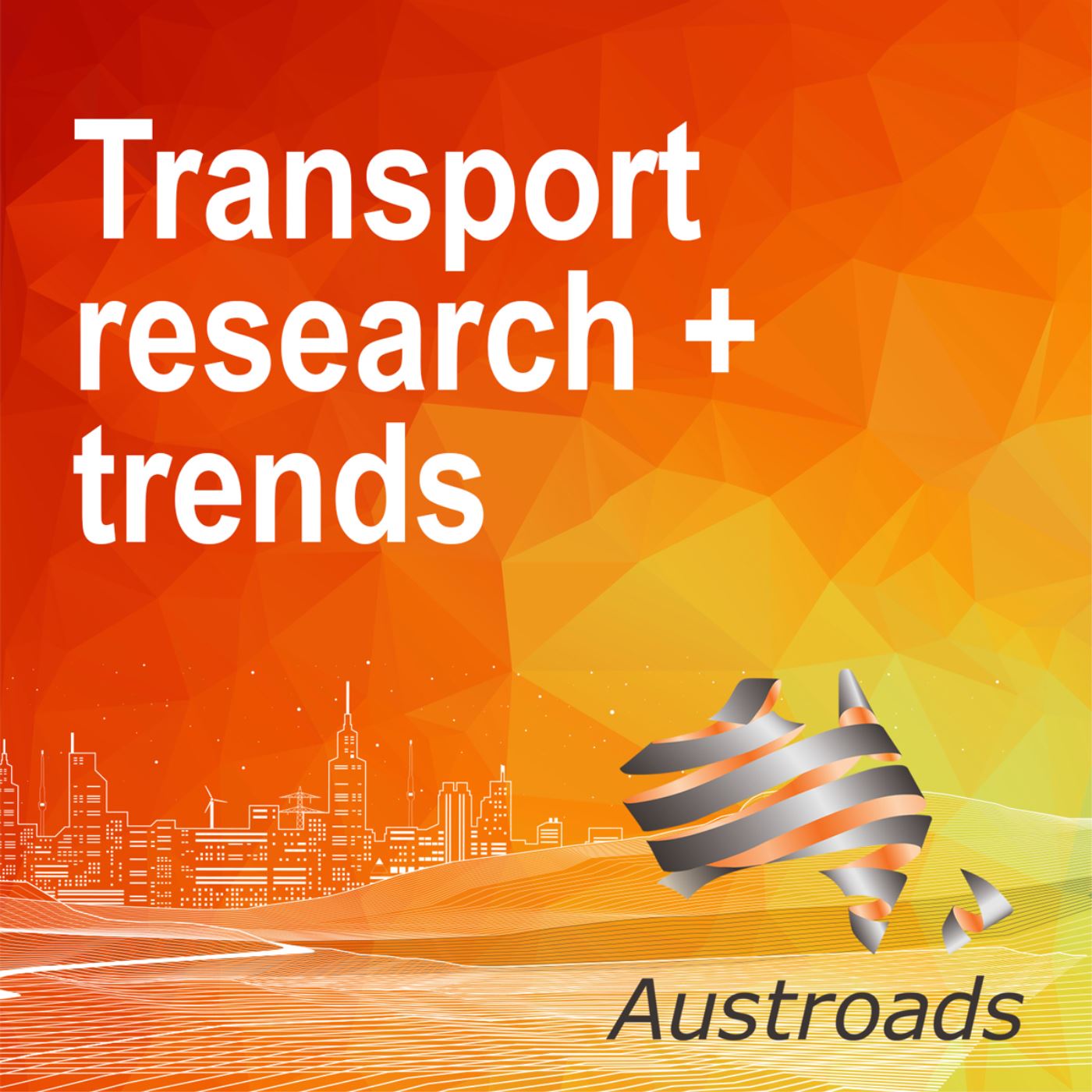Episodes
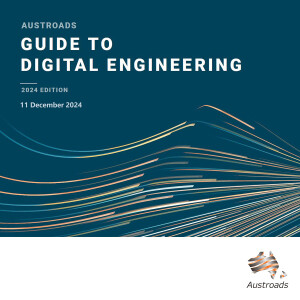
Wednesday Dec 11, 2024
Austroads Guide to Digital Engineering
Wednesday Dec 11, 2024
Wednesday Dec 11, 2024
Following extensive engagement with industry, representative specialist groups and transport agency stakeholders across Australia and New Zealand, Austroads has developed a guide to digital engineering.
The purpose of the guide is to assist transport agencies in Australia and New Zealand to deliver and operate their assets more effectively through obtaining better value and consistency in the application of digital engineering capability.
The guide communicates the need for a strategic approach to digital engineering alongside careful consideration and planning, clear engagement and support for its implementation.
This webinar, presented by Will Hackney and David Heins, provides an overview of the guide, including why it is needed, the structure of the guide, approaches to developing a strategy, roadmap, implementation planning, learning and development framework, and case studies.
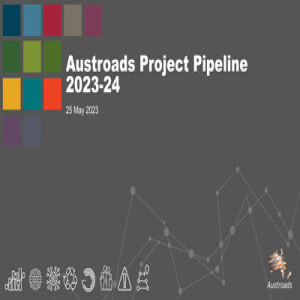
Thursday May 25, 2023
Austroads Project Pipeline 2023-24
Thursday May 25, 2023
Thursday May 25, 2023
This webinar is beneficial to consultants who may be interested in tendering for Austroads projects. The session covers new Austroads projects lined up for the 2023-24 financial year, Austroads process around research data collection and what is required to become a successful tenderer.
To find information about Austroads' current tenders, visit the tenders webpage. On that page, you can also subscribe to our Tenders newsletter to receive alerts when a new project is advertised.

Monday Apr 24, 2023
Getting ready for RADS - from Roads Australia’s podcast The Hub
Monday Apr 24, 2023
Monday Apr 24, 2023
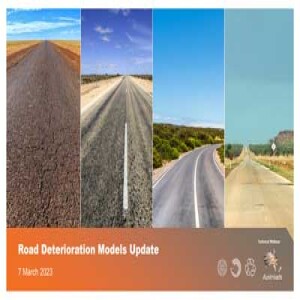
Tuesday Mar 07, 2023
Road Deterioration Model Update
Tuesday Mar 07, 2023
Tuesday Mar 07, 2023
Road deterioration (RD) models help in predicting future road condition and assessing maintenance needs. Austroads’ recent project updated the current Austroads RD models using the additional long-term pavement performance (LTPP) and long-term pavement performance maintenance (LTPPM) data as well as other available data, such as the traffic speed deflectometer (TSD) datasets, to improve these models’ explanatory power to support wider loading and the climate conditions observed in Australia. The updated and improved RD models can predict the impact of the wider loading and climate conditions observed in Australia.
The project produced four Austroads publications covering the updated RD models for cracking, strength (deflection), rutting and roughness. The project was managed in conjunction with the technical support of a Project Working Group sourced from industry and the road agencies. In addition, expert advice was sought from acknowledged experts in industry and academia.
Each of the reports documented a literature review of the state-of-the-art in deterioration modelling, a review of the available datasets for each of the RD models, the approach used to update each of the RD models and the validation of the rutting and roughness RD models.
This webinar with Dr Tim Martin, Ranita Sen and Tyrone Toole presents an overview of the methodology used to achieve the above objectives and the outcomes of the project.
The session covers:
- the basis for using the LTPP and LTPPM datasets for updating the RD models, including use of the TSD automatic crack detection (ACD) device data specifically for the update of the RD model for cracking
- the methodology adopted for updating the RD models
- validation of the rutting and roughness RD models.

Tuesday Feb 28, 2023
2022 Winners of the Austroads Bridge Awards
Tuesday Feb 28, 2023
Tuesday Feb 28, 2023
The webinar showcases the projects recognised with the Austroads Bridge Awards. The Austroads Bridge Awards acknowledge individuals and organisations that have delivered outstanding bridge structures and design across Australia and New Zealand.
The awards were presented at the 11th Austroads Bridge Conference held in Adelaide from 15 to 18 November 2022 proudly co-hosted by Austroads and the Department for Infrastructure and Transport South Australia.
The award-winning projects are:
Excellence in Innovation: InQuik Australia, Toorale Bridge Project
Submitted by InQuik, Alluvium Consulting Australia, and Pensar Infrastructure Group. Presented by Logan Mullaney, Managing Director of InQuik.
Excellence in Asset Management: Auckland Harbour Bridge Emergency Repairs
Submitted by Beca, WSP, SRG Global, Waka Kotahi NZ Transport Agency, and ASM Fulton Hogan-HEB Joint Venture. Presented by Will Pank, Technical Director – Structural Engineering, Beca.
Best Structure 35 metres or under: Hay Street Bridge Vertical Clearance Improvement Project
Submitted by BG&E, Bocol Constructions, MACA, and Main Roads Western Australia. Presented by BG&E’s Technical Director-Bridges Graeme Dundas, and WA - Bridge Lead Erica Smith.
Best Structure over 35 metres: Mandurah Bridge
Submitted by BG&E, Georgiou Group, Main Roads Western Australia, and City of Mandurah.
Presented by Boris Vujovic, BG&E’ Technical Director.
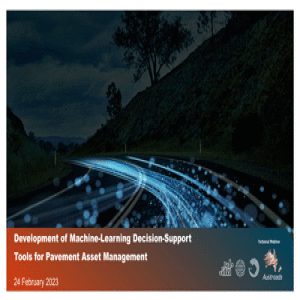
Friday Feb 24, 2023
Friday Feb 24, 2023
This is the second webinar in a two-webinar series. The session describes two case studies in the use of machine learning (ML) and artificial intelligence (AI) to create decision-support tools for pavement asset management.
In the first study, we explore whether ML can learn to reproduce expert treatment decisions and automatically identify candidate projects, using historic condition, treatment and inventory data.
In the second study, we explore extensions to conventional Pavement Management System (PMS) optimisation tools which provide insight into the network-wide implications of various multi-criteria funding allocation scenarios, and the levels of service that can potentially be realised.
The webinar is presented by Tim Cross and David Rawlinson.
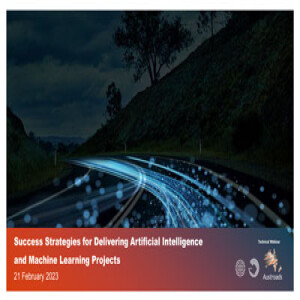
Tuesday Feb 21, 2023
Tuesday Feb 21, 2023
Austroads has published practical guidance to help expand the use of artificial intelligence (AI) and machine learning (ML) in pavement asset management. AI/ML projects are notoriously prone to failure, including late or incomplete delivery, or even being abandoned without useful outcomes.
This webinar, presented by Tim Cross and David Rawlinson, is the first one in a two-webinar series. It describes the tips, tricks and success strategies we have found to avoid the common pitfalls and ensure AI/ML projects proceed to delivery and successful integration with existing business processes. The presenters introduce a Quick Reference document to help practitioners in their projects, and provide practical examples to explain how to use it.
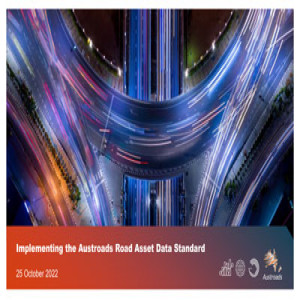
Tuesday Oct 25, 2022
Implementing the Austroads Road Asset Data Standard
Tuesday Oct 25, 2022
Tuesday Oct 25, 2022
To enable collaboration and the adoption of best-practice approaches across jurisdictions, Austroads is undertaking a multi-stage project to standardise and automate ways of recording and sharing road asset information.
The benefits of standardised collection of road asset data and the availability of a platform to store or exchange data include:
- direct savings to road agencies through reduced information management costs, including the opportunity to sustain an open and competitive market of data collectors
- reducing the time needed to train new staff and contractors
- facilitating better decision making on road investment and expenditure through consistent asset data
- facilitating the implementation of national reforms, including Heavy Vehicle Road Reform and automated vehicle reform
- providing consistent asset data to accommodate innovative technology in the road sector (e.g., LIDAR technology, building information modelling (BIM), and digital twinning).
This webinar, presented by Chris Koniditsiotis, Angus Draheim, Tom Magarey, David Deacon and Geoffrey Paton, presents an overview of the implementation of the Austroads Road Asset Data Standard and demonstrates a knowledge sharing platform that is being developed for road managers to use to report activities, collaborate and share insights.
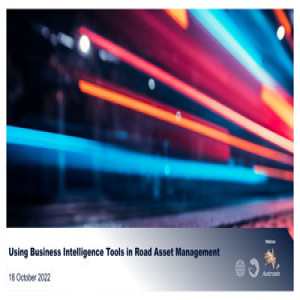
Tuesday Oct 18, 2022
Using Business Intelligence Tools in Road Asset Management
Tuesday Oct 18, 2022
Tuesday Oct 18, 2022
Road agencies are increasingly utilising various business intelligence tools to collect, process and analyse large amounts of asset management data from internal and external systems. Harnessed information is used to maintain road assets and improve the efficiency of their performance.
In this webinar data practitioners from the Tasmanian Department of State Growth, Queensland Department of Transport and Main Roads and Main Roads Western Australia talk about their experience in using digital data analytics tools for improving the accessibility and visualisation of data in road asset management.
Norah Weatherby’s presentation focuses on the Queensland Department of Transport and Main Roads’ asset information systems and analytics platforms that are critical to supporting Queensland’s road network.
David Deacon shares how the Tasmanian Department of State Growth’ Roads Asset Management Branch works with data to enable effective decision-making, break down silos and connect people.
Shaan Ciantar, from Main Roads Western Australia, talks about Power BI’s Pavelytics, an interactive app that displays relevant data to asset and maintenance managers on selected road sections. Shaan’s presentation goes through the need for such an app, how it was scoped for maximum usability, the data-design process, and finally a demonstration of the app in use.
Nicholas Archer presents a novel approach to mapping road data for Main Roads Western Australia using a custom Power BI visual and web service.
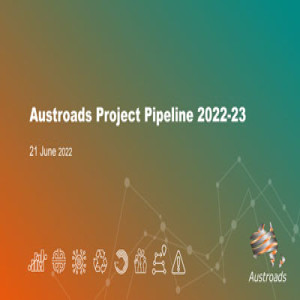
Tuesday Jun 21, 2022
Austroads Project Pipeline 2022-23
Tuesday Jun 21, 2022
Tuesday Jun 21, 2022
This webinar introduces Austroads new projects lined up for the 2022-23 financial year.
The session is most beneficial to consultants who may be interested in tendering for Austroads projects.
Upcoming projects focus on road network resilience, pavement design, movement and place, cycling and micromobility, future freight vehicles, road design, driver licensing, climate change risk assessment, automated and electric vehicle data exchange and provision.

